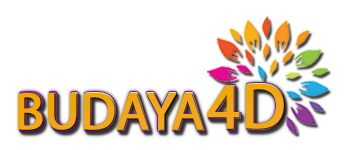BUDAYA4D 🏆️ Slot 4D Togel Online Situs Slot Gacor Terbaru Gampang Menang Maxwin
BUDAYA4D adalah salah satu platform judi slot online terpercaya nomor satu di Indonesia yang menawarkan pengalaman bermain di situs slot gacor dengan peluang maxwin terbaik. Bersama BUDAYA4D, Anda dapat menikmati permainan slot online yang lebih menyenangkan, modern, dan mudah menang. Dengan dukungan dari berbagai provider slot gacor terkemuka di dunia, kami menawarkan tingkat RTP hingga 99.01%, menjadikan peluang kemenangan Anda semakin besar.
Bagi Anda yang belum pernah mendapatkan maxwin atau jackpot besar di situs lain, BUDAYA4D adalah pilihan tepat untuk meraih peluang baru. Dengan koleksi permainan slot 4d yang mudah dimenangkan, banyak pemain kami berhasil mendapatkan jackpot hingga maxwin secara rutin. Menyongsong tahun 2025, kami terus menghadirkan inovasi menarik yang memastikan setiap pemain merasa puas, nyaman, dan senang bermain di situs kami.
Teknologi Canggih untuk Pengalaman Bermain Maksimal
Dengan teknologi HTML5, BUDAYA4D menghadirkan sistem permainan yang canggih, cepat, dan realistis, tanpa gangguan lemot. Pelayanan pelanggan profesional yang siap 24 jam serta metode transaksi yang lengkap menjamin kenyamanan dan kebutuhan semua anggota terpenuhi. Jangan lewatkan kesempatan untuk bergabung bersama situs slot terpercaya ini dan nikmati pengalaman bermain slot gacor terbaik.
Bermain Secara Bijak dan Bertanggung Jawab
Sebagai platform judi yang bertanggung jawab, BUDAYA4D menetapkan batas usia minimal 21 tahun untuk semua pemain. Kami memastikan bahwa anak di bawah umur tidak memiliki akses ke permainan judi di situs slot ini. Oleh karena itu, penting untuk mengenali batasan diri dan bermain secara bijak demi pengalaman yang positif.
Pilih Situs Slot Resmi untuk Keamanan Anda
Kami mengingatkan semua pemain untuk berhati-hati dalam memilih situs slot online. Hindari link yang tidak terpercaya yang berisiko memblokir akun Anda atau tidak membayar kemenangan Anda. Dengan memilih BUDAYA4D, situs slot terpercaya berlisensi resmi, Anda bisa bermain dengan aman, nyaman, dan tenang.

